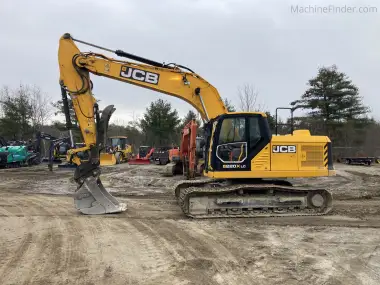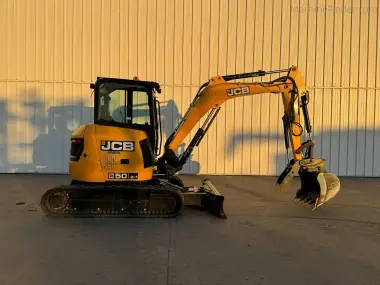Overview
An excavator is a powerful, multipurpose construction machine used for digging out the earth with a bucket attachment. Diesel-powered and designed to handle a variety of tasks, excavators have evolved into an essential piece of heavy equipment for construction sites, mining, waste management, forestry, and other industries.
Types and Components of Excavators
New and used excavators come in various sizes and styles, but the primary purpose remains the same – digging. The most common types of excavator are the standard hydraulic excavators, mini excavators, and long-reach excavators.
Standard excavators are versatile and efficient, perfect for the majority of construction projects. Compact excavators are smaller in size, making them an excellent choice for jobs in confined spaces or where maneuverability is essential. Long-reach excavators have an extended arm and boom, granting them access to hard-to-reach areas for tasks like dredging or excavation in deep pits.
Most excavators for sale have a tracked design, which provides increased stability and resistance to slipping on rough or loose terrain. However, some models feature wheels for more accessible transportation and increased speed on paved surfaces.
The main components of an excavator include the cab, engine, boom, digging arm, hydraulic system, and attachment (usually a bucket). The cab is where the operator sits and controls the machine, typically offering excellent visibility and comfort. The engine powers the excavator, with most models using diesel engines for their power and efficiency. The boom, a long articulated arm, provides the excavator's range and reach. The digging arm, also known as the dipper or stick, connects to the boom and attachment, allowing the excavator to dig and carry materials.
The hydraulic system plays a critical role in the operation of an excavator. It uses pressurized fluid to move the boom, arm, and attachment, granting the machine its incredible power and precision. The attachments, most commonly a bucket, are interchangeable, allowing the excavator to take on various tasks beyond digging.
Capabilities and Uses of Excavators
While excavators are primarily used for digging, their adaptability and diverse range of attachments make them one of the most versatile heavy machines in the construction industry. Excavators can dig between 10 to 48 feet deep, depending on the size and reach of the model. They are also stable on slopes, making them ideal for digging trenches, foundations, and even large pits.
With the right attachments, excavators can take on many other tasks:
1. Clearing Brush: Using brush cutters or mulcher attachments, excavators can effectively clear land of unwanted vegetation and overgrowth. This capability is especially useful in preparing construction sites and maintaining property borders.
2. Loading and Dumping: When equipped with a bucket attachment, the excavator becomes an efficient loader, capable of lifting and transporting large amounts of materials, such as soil, gravel, sand, rocks, and debris. This comes in handy while working on construction sites, in mining, or during waste management tasks.
3. Demolishing: Fitted with a hydraulic breaker or crusher attachment, excavators transform into powerful demolition machines. They can effectively break through walls, floors, and even reinforced concrete, making them indispensable in demolition and renovation projects.
4. Lifting and Moving Objects: Excavators can also function as cranes when equipped with a lifting attachment, enabling them to move heavy objects around construction sites or load materials onto trucks.
5. Drilling and Piling: With a rotary drilling attachment, excavators can bore holes into the ground for installing foundation elements like piles or conducting soil tests.
Safety and Maintenance of Excavators
Like any heavy equipment, safety is of utmost importance when operating an excavator. Operators must undergo proper training and obtain necessary certifications to ensure they can safely and effectively maneuver the machine. Always adhere to safety guidelines and regulations, including wearing appropriate safety gear, maintaining a secure working distance, and following load capacities.
Routine and regular maintenance of excavators is vital to ensure their longevity and efficiency. Operators should inspect their machines daily, checking for any damages, leaks, or potential issues. Regularly monitoring the hydraulic system, engine, transmission, and tracks or wheels can help detect any problems early, preventing costly repairs or downtime.
Conclusion
Excavators are a valuable asset to the construction, mining, and other industries, thanks to their versatility, power, and efficiency. With various types, sizes, and attachments available, these machines can handle a wide range of tasks beyond digging. By prioritizing safety and following proper maintenance procedures, operators can make the most of these high-powered construction machines and ensure their successful integration on any project site.

